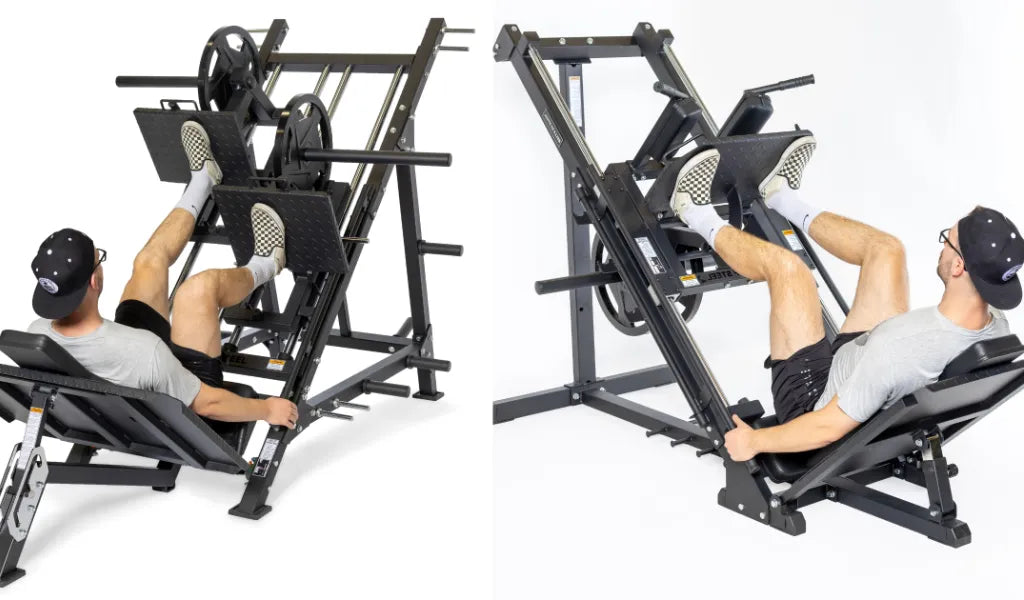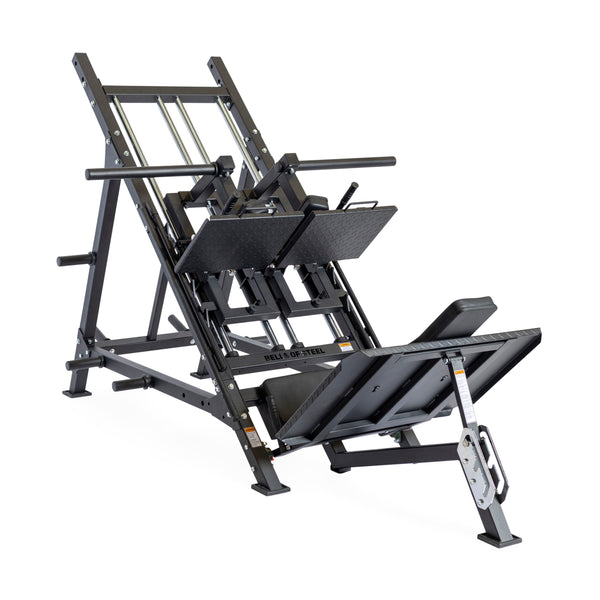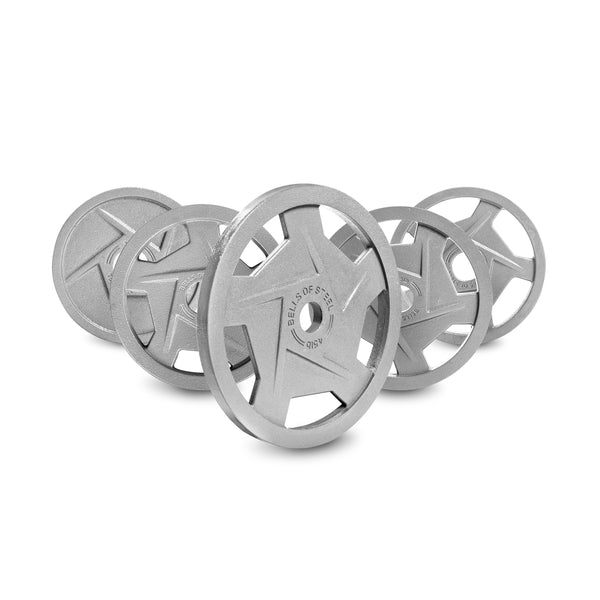So, you've decided to transform that dusty corner of your home into a powerhouse of strength. But, oh dear home gym enthusiast, the eternal question beckons – Iso-Lateral Leg Press or the classic Leg Press? Fear not, for we're about to embark on a journey through the iron-clad realms of these two leg-sculpting behemoths.
If you want to compare the Bells of Steel 2-In-1 Iso Leg Press & Hack Squat Machine and the Leg Press Hack Squat Machine, we’ve got you covered with the table below.
If you’re still trying to decide which option is right for your training goals, keep reading for a full comparison of these two styles of leg press machines.
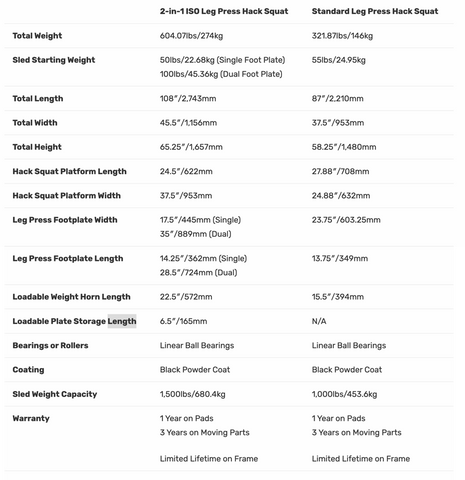
Traditional Leg Press: The OG Heavyweight
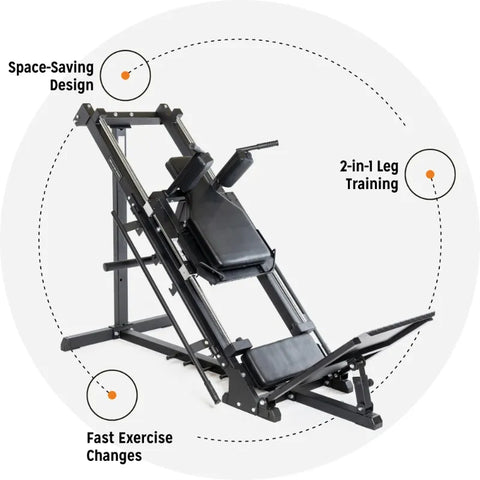
Leg Press Machine, like that trusty old pair of sneakers, has been a staple in gyms for eons. It's straightforward – you sit, you press, and your quads and glutes scream for mercy.
The Leg Press machine allows both legs to work in unison, giving you that raw power to move mountains. It's a symphony of strength, where you push the platform away with sheer might.
Leg Press Pros:
- Raw Power: Move heavy weights like a boss.
- Space Saver: Compact and doesn't demand an Olympic-sized room.
- Affordability: Fewer moving parts tend to result in a lower price point.
Leg Press Cons:
- Unilateral Neglect: Both legs move together; individual imbalances might go unnoticed.
Iso-Lateral Leg Press: The Underdog Challenger
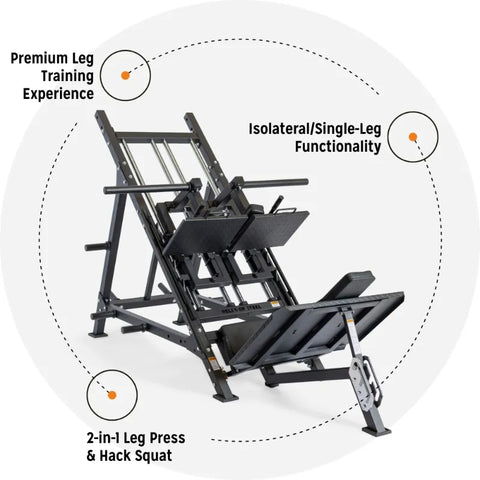
Now, enter the Iso-Lateral Leg Press, the sleek and sophisticated cousin of the Leg Press. This beauty lets each leg strut its stuff independently. Picture this: one leg working while the other takes a breather. It's like a gym version of a solo performance – more precision, more focus.
Iso-Lateral Leg Press Pros:
- Individual Mastery: Spot and correct imbalances with precision.
- Versatility: Unlock more workouts in less space; no barbell required.
Iso-Lateral Leg Press Cons:
- Space Invader: It might demand more room than its classic counterpart.
- Learning Curve: Getting used to the independent movement can be a tad tricky for beginners.
Choosing You Gladiator
Space Matters
Consider the size of your home gym kingdom. The Leg Press is the modest knight, fitting into tight spaces, while the Iso Lateral Leg Press might need a bit more breathing room. Measure twice, buy once.Solo or Group Show?
Here's the scoop: the Leg Press is the charismatic team player, orchestrating a symphony with both legs in perfect harmony. On the flip side, the Iso-Lateral Leg Press is the solo artist, indulging in a virtuoso performance, leg by leg.
If your fitness narrative leans towards overall strength and power, the Leg Press is your trusty ally. It's a group effort, a collective push towards conquering fitness peaks.
Now, if your goals involve fine-tuning, correcting imbalances, or targeting specific muscle groups, the Iso-Lateral Leg Press steals the spotlight. It's your personal trainer, ensuring each leg gets its moment to shine.
Budget Brawls
Let's talk turkey – or, in this case, iron. The Leg Press is often the thriftier choice, while the Iso-Lateral Leg Press might poke your wallet a bit harder. Assess your budget and see if you're ready for the financial squats.
FAQs: Ironclad Wisdom
Q: Can I use the traditional Leg Press for unilateral training?
A: Technically, no. The Leg Press is designed for bilateral action, but creativity knows no bounds. You can try lifting one leg at a time, but the Iso-Lateral Leg Press is the true solo virtuoso.Q: Leg Press or Iso-Lateral Leg Press for a home gym that's also my living room?
A: If your guests don't mind sharing their wine glasses with a leg press, go for it! But seriously, consider space constraints and the tolerance of your roommates.
Parting Words
In this grand symphony of strength, whether you choose the Leg Press or the Iso-Lateral Leg Press, remember: both are maestros in sculpting that lower body. So, go forth, oh mighty home gym hero, and may your quads be ever shredded!
